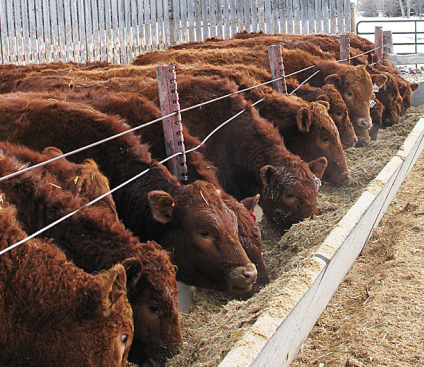The Soy Inquisition: Spilling the Beans
by Matthew Ajaj
March 8, 2022
Hailing from the lands of East Asia, the soybean has traversed land and sea and now resides in your kitchen in one form or another. Soy lecithin is an additive found in various processed products like cookies and ice cream, soybean oil is the most prominent component of vegetable oils and is ubiquitous within your fridge and freezer in various frozen goods, and soy protein is the main protein constituent of many infant formulas, soy-based whey proteins, and imitation meat products—including the infamous “impossible foods” that have been making media headlines.
Despite its prevalence, soy’s rise to stardom in the food kingdom has not been without controversy. Gaining steam in the latter half of the 20th century as a healthful protein option with cardioprotective and anti-carcinogenic effects, the soy crusade plateaued in the third millennium after uncertainty developed around the veracity of its alleged health benefits, and was met with significant pushback when a memetic phenomenon brought attention to the presence of phytoestrogens within soy products.
An iteration of the “soyboy” meme, which initially rose to popularity in the late 2010s.
To get a bit technical, phytoestrogens are “xenoestrogens”—compounds with a similar molecular structure to estrogen—that are derived from plants. There are various types of phytoestrogens, and soybeans are particularly packed with a class of phytoestrogens called “isoflavones”. The surface-level issue with isoflavones is that, in mimicking estrogen, it follows that they will work like estrogen. One might be hesitant to eat foods full of estrogen considering the delicate nature of hormones, and men especially would have reason to worry considering the feminizing effects. This concern led to the rise of the “soyboy” meme, with the implication behind it being that soy creates effeminate men. And although mitigating masculinity and tanking testosterone levels is the most popularized concern of xenoestrogens like those found in soy, there are also worries that they can cause pubertal dysfunction in children and actually increase risk of various hormone-based cancers in women, such as breast cancer. [1]
If the phytoestrogen predicament were as simple as “soy = estrogen”, it would be a no-brainer to avoid soy. However, just because isoflavones mimic estrogen does not necessarily mean they will produce the same effects as estrogen. For example, acyclovir is an anti-viral that works by acting as a mimicker—also known as an “analogue”—of the molecule guanosine, which is normally an integral part of DNA structure. However, instead of acting like guanosine and becoming integrated into the viral DNA, acyclovir terminates the DNA chain and thus prevents viruses from replicating themselves. Other examples would be tamoxifen and clomiphene, which are estrogen analogues that are used to treat breast cancer and polycystic ovary syndrome (PCOS) respectively. They act as “partial agonists” of estrogen receptors, meaning that they produce mild estrogenic effects but simultaneously prevent actual estrogen from binding its receptors, thus mitigating the more potent estrogenic effect that would not optimal for breast cancer and PCOS patients. But of course, many drug analogues act just like their counterpart; levothyroxine, for example, mimics thyroid hormone for the treatment of hypothyroidism.
So the big question is, “Do the isoflavones in soy have agonistic, partial agonistic, or antagonistic effects on estrogen receptors?” And unfortunately, the waters are muddied on this issue as well. Numerous major studies claim that soy’s phytoestrogens have no effect on human hormone levels, and that if consumed in moderation there is no need for concern. [2] But other studies do show soy having some effect on hormone levels, as well as decreases in sperm count. [3,4] Furthermore, studies in rats have shown that soy diets increase anxiety, decrease fertility, and decrease levels of oxytonin—the bonding hormone. [4] In monkeys, a soy diet showed changes in social behavior, including increased episodes of submission and aggression—suggesting emotional lability—as well as loner behavior. [5] A particularly interesting scientific development is the notion that soy consumption decreases risk of men developing prostate cancer, which is of course a major positive in its own right. [6] However, the underlying concern is that prostate cancer is hormone-dependent, meaning that the cancer relies on men’s testosterone to develop; thus, this paradigm suggests that soy decreases testosterone levels.
The science may not be settled on soy, but that should not preclude one from developing a grounded perception on the matter. Soy contains estrogen-mimicking compounds that, whether they effect hormone levels or not, have been shown to produce concerning hormonally-related effects on human and animal models. Other eyebrow-raising concerns include the fact that a supermajority of soybeans are utilized as the primary protein source in livestock feed, and that the soybean’s presence and prevalence in the Western world has coincided with a drop in male testosterone levels by about 1% per year over the past few decades. [8] Given its relatively recent residence in the West and the lack of consensus in the research behind it, one should approach soy with caution.
That is much easier said than done, however, considering the pervasiveness of soy in our cupboards and refrigerators. A helpful starting point would be to consider that not all soy products contain the same amount of isoflavones. According to studies done by the United States Department of Agriculture (USDA), soy protein contains a massive amount of isoflavones, soy lecithin contains a rather significant amount but much less than soy protein, and soybean oil contains no isoflavones at all. [9] Another red flag to keep in mind is the substantial amount of isoflavones in various baby formulas, and given the unknown impact of soy on hormones, it may be of especially significant concern to avoid the use of said formulas in infants as they go through critical periods of development.
Soy is an alien species to the Western world, and while we have been diplomatic in our approach to its presence, the doubts raised over recent years have put forward viable concerns as to how friendly our new isoflavonoid-filled visitors might truly be. As conscious consumers, we must remain ever vigilant as to not let soy end up consuming us.
* * *
Citations
[1] Moshe Shike, Ashley S. Doane, Lianne Russo, Rafael Cabal, Jorge S. Reis-Filho, William Gerald, Hiram Cody, Raya Khanin, Jacqueline Bromberg, Larry Norton, The Effects of Soy Supplementation on Gene Expression in Breast Cancer: A Randomized Placebo-Controlled Study, JNCI: Journal of the National Cancer Institute, Volume 106, Issue 9, September 2014, dju189, https://doi.org/10.1093/jnci/dju189
[2] Reed KE, Camargo J, Hamilton-Reeves J, Kurzer M, Messina M. Neither soy nor isoflavone intake affects male reproductive hormones: An expanded and updated meta-analysis of clinical studies. Reprod Toxicol. 2021;100:60-67. doi:10.1016/j.reprotox.2020.12.019
[3] Dillingham BL, McVeigh BL, Lampe JW, Duncan AM. Soy protein isolates of varying isoflavone content exert minor effects on serum reproductive hormones in healthy young men. J Nutr. 2005;135(3):584-591. doi:10.1093/jn/135.3.584
[4] Chavarro JE, Toth TL, Sadio SM, Hauser R. Soy food and isoflavone intake in relation to semen quality parameters among men from an infertility clinic. Hum Reprod. 2008;23(11):2584-2590. doi:10.1093/humrep/den243
[5] Hartley DE, Edwards JE, Spiller CE, et al. The soya isoflavone content of rat diet can increase anxiety and stress hormone release in the male rat. Psychopharmacology (Berl). 2003;167(1):46-53. doi:10.1007/s00213-002-1369-7
[6] Neal G Simon, Jay R Kaplan, Shan Hu, Thomas C Register, Michael R Adams, Increased aggressive behavior and decreased affiliative behavior in adult male monkeys after long-term consumption of diets rich in soy protein and isoflavones, Hormones and Behavior, Volume 45, Issue 4, 2004, Pages 278-284, ISSN 0018-506X, https://doi.org/10.1016/j.yhbeh.2003.12.005
[7] Applegate CC, Rowles JL, Ranard KM, Jeon S, Erdman JW. Soy Consumption and the Risk of Prostate Cancer: An Updated Systematic Review and Meta-Analysis. Nutrients. 2018;10(1):40. Published 2018 Jan 4. doi:10.3390/nu10010040
[8] Thomas G. Travison, Andre B. Araujo, Amy B. O’Donnell, Varant Kupelian, John B. McKinlay, A Population-Level Decline in Serum Testosterone Levels in American Men, The Journal of Clinical Endocrinology & Metabolism, Volume 92, Issue 1, January 2007, Pages 196–202, https://doi.org/10.1210/jc.2006-1375
[9] U.S. Department of Agriculture, Agricultural Research Service. 2015. USDA Database for the Isoflavone Content of Selected Foods, Release 2.1. Nutrient Data Laboratory Home Page: http://www.ars.usda.gov/nutrientdata/isoflav




